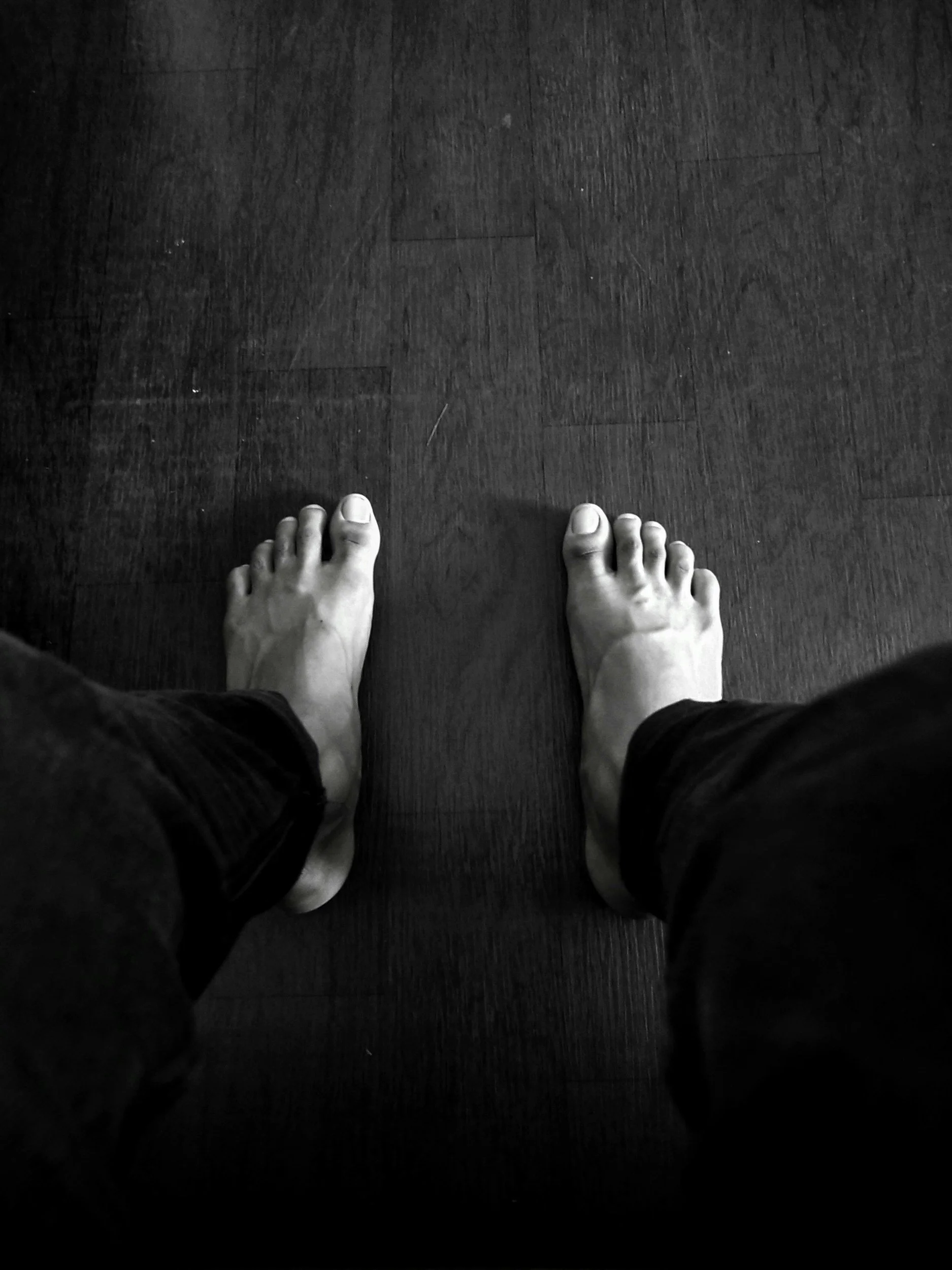
What Is Osteopathy? Benefits & Treatment Explained
Osteopathy in the United Kingdom holds a significant place in the realm of complementary and alternative medicine. It is regulated by the General Osteopathic Council (GOsC), ensuring that practitioners meet the necessary standards of education, training, and professional conduct. Your Osteopath will have undergone rigorous education and training, often completing a four year degree program in osteopathy, which includes clinical experience.

Beginner’s Guide of Osteopathy
Osteopaths aim to restore a state of balance which is required for healthy living. Like Physiotherapy and Chiropractic, Osteopathy uses gentle and non-invasive manual techniques, but practitioners can also develop other skills to compliment their approach including exercise rehabilitation, dry needling, taping and bracing

Foot Osteoarthritis (OA)
Foot osteoarthritis is a common cause of foot pain found in one in six people aged over 50, 69% of whom report disabling foot pain. Osteoarthritis is the wear and tear of the cartilage within a joint which can lead to reduced range of motion and pain. The big toe joint (MTP) is the most commonly affected joint in the foot, followed by the midfoot joints.
Big toe joint osteoarthritis is pain located in the 1st toe. It is found more commonly in females, with increased age and lower socioeconomic classes. Structural factors associated with the condition include a flatter foot posture and longer and wider bones around the big toe joint.

Hypermobility
Around 10% of the population are classified as hypermobile or Generalised joint hyper-mobility (GJH) and have multiple joints with a larger than normal flexibility. These individuals are able to bend joints beyond a range of motion that is perceived as being normal.
It has been documented that up to 55% of children could be classified as being hypermobile (affecting more girls than boys). As we get older hypermobility gets less common, falling to around 34% in those aged 20–30 years and 18% in those aged 60 years or older.

Is My Bike Causing My Back Pain?
Throughout our lives in the modern western world we sit down for a large portion of our day, whether its at work, travel or at home, so it’s a significant issue.
Cyclists face a similar problem, with the cycling posture reaching the limits of lower back, or lumbar, flexion for extended periods of time.
Low back pain and anterior knee pain are the most common symptoms in professional and non-professional cyclists and are the most likely to cause time off the saddle.

Knee Osteoarthritis: How Physiotherapy Can Help
Knee osteoarthritis (OA) is a common and often frustrating condition that affects millions of people worldwide. If you're living with knee OA, you're not alone—and the good news is, you're not powerless either. Physiotherapy offers proven, evidence-based strategies to help manage symptoms, improve mobility, and restore quality of life.
In this article, we’ll walk you through how a physiotherapist can support your journey with knee OA, especially through one of the most important — but often overlooked — tools in the treatment process: education.

Early Identification of Axial Spondyloarthritis
If you’ve been struggling with ongoing back pain—especially if it started young, sticks around for months, or feels worse in the morning—it might be time to think beyond a simple sprain or posture issue. One possible cause that many people (and even some healthcare providers) overlook is axial spondyloarthritis, or axSpA—a type of inflammatory arthritis that affects the spine and pelvis. In this blog, we’ll break down what axSpA is, how it’s different from everyday back pain, and why physiotherapists are often the first to spot it.

The Power of Strength Training for Arthritis: Improve Mobility, Reduce Pain, and Reclaim Your Life
Arthritis affects millions of people worldwide, causing chronic joint pain, stiffness, and reduced mobility. While medication and rest may offer some relief, research increasingly supports strength training for arthritis as one of the most effective ways to manage symptoms and enhance quality of life. At MVMNT Physiotherapy, we believe in empowering patients with proven, science-backed treatments—and strength training is a game-changer. Whether you’re dealing with osteoarthritis, rheumatoid arthritis, or another inflammatory joint condition, incorporating a tailored resistance exercise program can yield long-term benefits.

5 Key Benefits of Regular Cardiovascular Exercise for Your Health and Recovery
Cardiovascular exercise is more than a fitness trend—it’s a cornerstone of long-term health and recovery. Whether you’re looking to prevent injury, recover from one, or simply feel stronger in your daily life, regular aerobic activity can help you get there.
If you’re unsure how to start, or if you have an injury or condition that makes cardio challenging, speak with a physiotherapist. We can help you build a safe, effective plan tailored to your goals and abilities.

Low Back Pain - Facts & Myths
You may ask why is this important to you? Well, many of us will suffer from lower back pain in our life time. And many of us will seek care from a Physiotherapist, Chiropractor, Osteopath or even a Surgeon. But, are you receiving the best advice and treatment from them?
There are a lot of preconceived ideas about what to do when you suffer from back pain – here we discuss some of them in light of the latest evidence.

Hamstring Injuries
Hamstring injuries are common among athletes and active individuals, and they refer to any type of damage to the muscles or tendons in the back of your thigh. The hamstrings are a group of three muscles that run from the pelvis to the knee and are responsible for hip extension and knee flexion, often referred to as a hamstring strain or pulled hamstring they are one of the most common injuries seen in football, rugby and athletics, indeed any sport or activity which will require sprinting.

Understanding RED-S (Relative Energy Deficiency in Sports)
Relative Energy Deficiency in Sport (RED-S) is a syndrome that can significantly impact the health and performance of athletes, particularly females. It arises from an imbalance between dietary energy intake and the energy expended in exercise, leading to insufficient energy availability for the body's needs. This article aims to provide a comprehensive understanding of RED-S, focusing on its symptoms, effects, and management strategies, specifically tailored for women who engage in regular exercise and are concerned about their health and performance.

Marathon Injuries
We are now less than 2 months out from the London Marathon and while some people are already training for it there are some people who are yet to start their program.
Completing a full marathon (42km or 26.2 miles) is an exceptionally challenging test and unfortunately many people get injured and don’t make the start line. Marathon injuries are not often attributable to one cause, they are usually multifactorial.

Physios in Rugby
I hope it goes without saying that we provide more than the ‘magic sponge & bucket’ approach! Physios working in Rugby provide on and off-pitch injury care and rehabilitation as well as injury prevention. On-pitch injury care tends involve trauma and first aid for anything from blood injuries to more serious and life-threatening/changing concussions and spinal fractures. Off-pitch care includes pre-game taping and injury assessment to check ability to play and rehabilitation and injury prevention advice and management.

ACL Injuries in Female Athletes: Risk Assessment and Prevention
There’s no argument that Anterior Cruciate Ligament (ACL) injuries are a significant issue for athletes, physiotherapists, and sports medicine professionals. Female athletes, in particular, face a markedly higher risk, which has far-reaching implications for their long-term health and athletic careers. A focus on prevention of ACL injuries is the most effective and cost-efficient way to reduce the burden of knee injuries in athletic populations. This blog will explore why female athletes are at greater risk of ACL injuries, how to assess their risk factors, and what physiotherapists can do to help prevent these injuries.

Common Injuries in Dancers
According to research, up to 80% of dancers will have an injury that impacts their capacity to dance, with overuse accounting for the majority of injuries.
Due to immense physical and psychological demands within dance and the performing arts, injuries are both plentiful and multifactorial in nature. Other genres of performing arts also suffer similarly high injury rates, including over 50% of professional musicians and actors reporting injuries annually.
Although some sectors within the dance and performing arts spheres have gradually begun incorporating injury prevention principles (including emphasising the importance of strength and conditioning, cross-training, and nutrition), extrinsic risk factors such as long rehearsal schedules resulting in inadequate rest and specialised footwear, such as pointe shoes, are not as easily altered.

Skiing Injury-Reduction Preparation
Off skiing this winter? A little bit of pre-trip preparation could help reduce your risk of getting injured, allow you to improve your technique – helping you ski for longer!
Whether you are a seasoned skier or heading to the slopes for the first time this winter, the unique motions and demands of skiing means the chances are you are about to use a set of muscles which could be serving you better.
There are several areas in which to focus on to help support your “skiing experience”.

The Benefits of Proactive Physiotherapy
Proactive physiotherapy is more than a response to injuries; it’s a powerful tool for boosting overall health, athletic performance, and longevity. By addressing minor issues before they escalate, this preventive approach can improve quality of life, optimise movement, and enhance physical resilience.

Top Mistakes when Training for a 10k
Training for a 10K run is an exciting challenge, whether you’re a seasoned runner or a beginner looking to push your limits. The distance is long enough to test your endurance but manageable enough to be accessible to many. However, like any fitness goal, there are common mistakes that can derail your training and keep you from achieving your best performance on race day. Here’s a look at some of the most common mistakes and how to avoid them.

Concussion 101
Concussion is a form of brain injury that causes a temporary disturbance in how the brain functions. Concussions can be caused by a direct or indirect impact to the player’s head or body. This impact causes the brain to move back and forth inside the skull. Concussion typically results in short lived signs and symptoms. However, in some cases the symptoms may evolve over several hours or days. Therefore, concussion must be taken seriously as there is a risk of brain injury with children most at risk.
